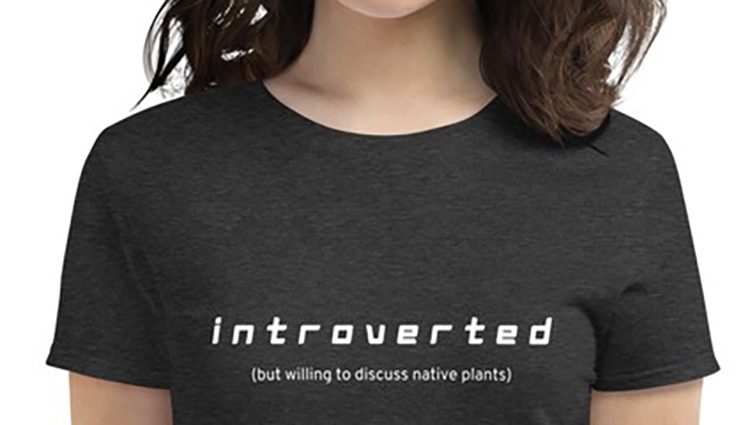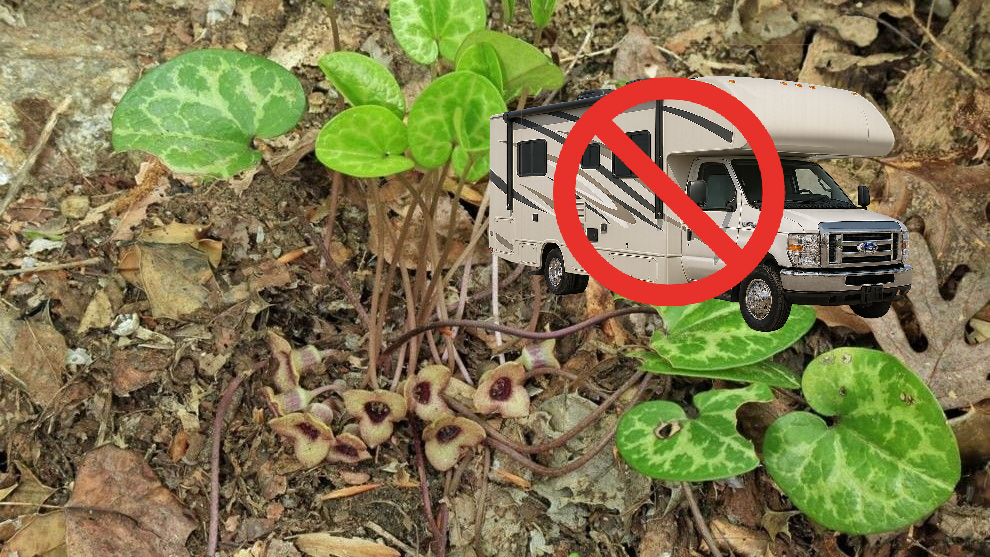Shopper Survey Reveals the Value of the Upstate SCNPS Native Plant Sale for Gardeners of All Passions and Plans
by Jo Ann McCracken-Redding
I went to the 2024 Upstate SCNPS spring sale to do my own shopping plus a little reporting on the side. As I headed home to introduce my adopted plants to their new habitat, I stopped and talked to other shoppers as they were leaving. These brief conversations made up a small, casual survey of what people bought and why. I was delighted by the variety of reasons why people came – some from considerable distances – to shop our sale and by how much they appreciate our plants as a rare resource.
A Sampling of Shopper What’s and Why’s
Upping the Native Quotient in an Existing Garden (my story)
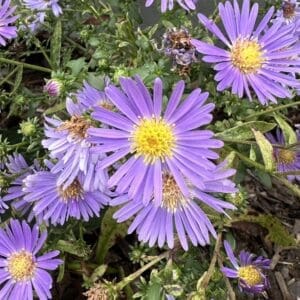
What: I bought New York aster (Symphyotrichum novi-belgii), indian pink (Spigelia marilandica), green & gold (Chrysogonum virginianum), scarlet sage (Salvia coccinea) , and blue mistflower (Conoclinium coelestinum).
Why: To fill in among existing plants and increase the native representation in my garden. And, of course, to attract birds, butterflies, and bees and help them fulfill their vital role in our ecosystem.
Pictured: New York aster (Symphyotrichum novi-belgii), photographed in September, purchased at 2024 spring SCNPS sale. Now thriving in my yard.
Photo Credit: Photo Credit: Jo Ann McCracken-Redding
Creating a Woodland Garden
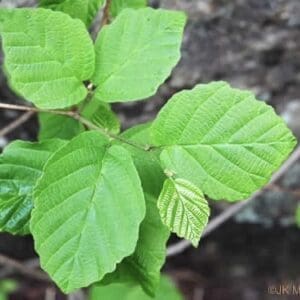
What: The Yoders bought witch-hazel (Hamamelis virginiana), which they couldn’t find in other nurseries. They bought other plants including azaleas (Rhododendron spp.), mountain mint (Pycnanthemum spp.), and giant coneflower (Rudbeckia maxima), to name a few.
Why: A year and a half ago they downsized from a farm that had natural woodland gardens to a suburban home on an acre of land, where they’re planting a new woodland garden.
Pictured: witch-hazel (Hamamelis virginiana), photographed in April.
Photo Credit: Photo Credit: Janie Marlow/namethatplant.net
Expanding a Pollinator Garden
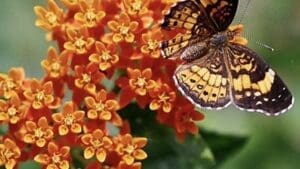
What: Ashley and her husband bought black-eyed Susans (Rudbeckia spp.), coneflowers (Echinacea spp.), yarrow (Achillea millefolium), salvia (Salvia spp.), and butterfly weed (Asclepias tuberosa).
Why: Last year Ashley and her husband bought plants at our sale, and she reported, “Everything we planted really took off and looks great…. We had a ton of hummingbirds, lots of butterflies and bees. It’s been really nice.” She added that the plants at our sale are “so much better than anything we get a nursery.” Don’t mess with success: now they’re filling out the rest of the yard with more of these bountiful plants.
Pictured: butterfly milkweed (Asclepius tuberos var. tuberosa), photographed in July.
Photo Credit: Photo Credit: Steve Marlow/namethatplant.net
Groundbreaking with Natives in Suburbia
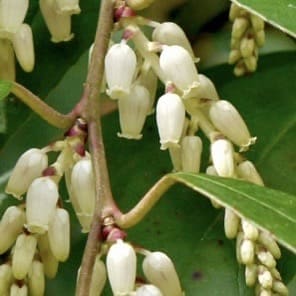
What: Several plants Mel had a hard time finding elsewhere, such as doghobble (Leucothoe fontanesiana), St. John’s wort (Hypericum spp.), oakleaf hydrangea (Hydrangea quercifolia), and honeysuckle (Lonicera sempervirens).
Why: Mel got HOA approval to introduce natives into the front-yard landscape of her suburban home – a break-out from the traditionally approved grass and non-native evergreens that are standard for controlling the size and cookie-cutter look of plants. (No one asked insects and wildlife to vote on this standard that robbed them of the ability to work for us and our food web… not to mention their ability to survive!) Mel is hoping others will see her new plantings and think, “I can see this in my front yard.” Kudos and green thumbs up, Mel!
Pictured: mountain doghobble (Leucothoe fontanesiana), photographed in April.
Photo Credit: Photo Credit: Janie Marlow/namethatplant.net
Restoring a Girl Scout Wildflower Trail Ravaged by Tornado (with the help of a grant from Upstate SCNPS!)
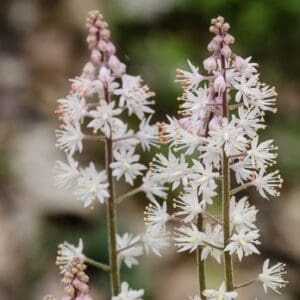
What: Shoppers for the Girl Scouts’ “Wildflower Way Trail” were ready with a list of plants needed to complete their restoration: spicebush (Lindera benzoin), sweetshrub (Calycanthus floridus), bottlebrush buckeye (Aesculus parviflora), American beautyberry (Callicarpa americana), lady fern (Athyrium filix-femina), foamflower (Tiarella austrina), wild columbine (Aquilegia canadensis), mayapple (Podophyllum peltatum), and yellowroot (Xanthorhiza simplicissima).
Why: Upstate SCNPS provided a $1000 grant for the restoration of Camp Mary Elizabeth’s wildflower trail. The trail was established along Holston Creek by the Green Gardeners Club in 1952, and over the years, other garden club members contributed to its maintenance and enhancement. It was cherished as a spot where rare and/or endangered species were protected, notably dwarf crested iris (Iris cristata), beautyberries (Callicarpa spp.), and Oconee bells (Shortia galacifolia).
In 2020 a tornado ripped through the area and destroyed many old pines and hardwoods. When the downed trees were cleaned out along the creek, so were many of the native plants and most of the vegetation, inviting invasive plants to takeover.
Pictured: Piedmont foamflower (Tiarella cordifolia), photographed in April.
Photo Credit: Photo Credit: Keith Bradley/namethatplant.net
Discover More About SCNPS Upstate Native Nursery
Learn more about the Upstate Native Nursery hosting this native plant sale and its exciting plans for a move and expansion to a new, permanent location.


